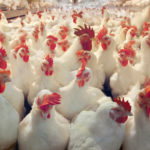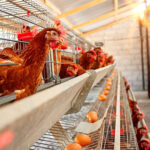As the global demand for poultry products continues to rise, efficient and high-production poultry layer cages have become essential for modern poultry farming. Whether you’re an established farmer or an entrepreneur looking to scale up your operations, investing in the right poultry layer cages can significantly impact your farm’s productivity and profitability. This article explores the benefits of high-production poultry layer cages for 20,000 chickens, offering insights into design, functionality, and the best practices for maximizing efficiency.

The Importance of Choosing the Right Poultry Layer Cages
Choosing the right poultry layer cages is crucial for several reasons. Not only do they enhance egg production, but they also improve the overall health and welfare of the chickens. High-production cages are designed to optimize space, ensure proper ventilation, and facilitate easy management of large flocks. By investing in quality cages, farmers can reduce labor costs, minimize feed waste, and ensure a steady supply of eggs.
Key Features of High-Production Poultry Layer Cages
- Durable Construction: High-quality poultry layer cages are typically made from galvanized steel, providing durability and resistance to corrosion. This ensures a long service life, even in challenging environmental conditions.
- Optimal Space Utilization: These cages are designed to accommodate a large number of birds while maintaining comfort. With tiered systems, farmers can efficiently manage space without compromising the welfare of the chickens.
- Automated Systems: Modern layer cages come equipped with automated feeding, watering, and egg collection systems. This reduces manual labor and enhances operational efficiency.
- Ventilation and Lighting: Proper ventilation and lighting are crucial for maintaining the health of the flock. High-production cages are designed to ensure adequate airflow and lighting, promoting better egg production.
- Ease of Maintenance: The design of these cages allows for easy cleaning and maintenance, reducing the risk of disease outbreaks and ensuring a hygienic environment.

Case Studies: Successful Implementation of Poultry Layer Cages
Case Study 1: Livi Machinery’s Success in Uganda
Livi Machinery has demonstrated its expertise by delivering state-of-the-art poultry farming systems to a farm owner in Uganda. The installation of 20,000 layers in A-type chicken cages has significantly boosted the farm’s efficiency and egg production. The farmer reported a marked improvement in profitability, attributing it to the advanced design and functionality of the cages.

Case Study 2: Enhancing Productivity in Zambia
A poultry farmer in Lusaka, Zambia, invested in 20,000 bird layer cage equipment from Livi Industry. The project included gantry feeding machines and flat belt manure cleaning systems, which streamlined operations and increased egg production. The farmer expressed satisfaction with the quality and durability of the equipment, highlighting the significant economic benefits achieved.

Designing the Ideal Poultry House for 20,000 Chickens
When planning a poultry house for 20,000 chickens, several factors must be considered to ensure optimal conditions for the birds and efficient farm management.
Key Considerations:
- Space Allocation: Ensure sufficient space per bird to promote comfort and reduce stress. A well-designed poultry house should consider stocking density to prevent overcrowding.
- Ventilation: Implement natural or mechanical ventilation systems to maintain air quality and temperature control, essential for the health and productivity of the flock.
- Lighting: Adequate lighting is vital for stimulating egg production. Automated lighting systems can help maintain a consistent light schedule.
- Waste Management: Efficient waste management systems, such as manure belts or pits, are crucial for maintaining hygiene and preventing disease.
- Biosecurity Measures: Implement strict biosecurity protocols to protect the flock from diseases. This includes controlled access to the poultry house and regular health monitoring.
Benefits of Investing in High-Production Layer Cages
- Increased Egg Production: High-production cages are designed to optimize conditions for laying hens, resulting in higher egg yields.
- Cost-Effective Operations: Automation reduces labor costs and feed waste, contributing to overall cost savings.
- Improved Chicken Welfare: With proper space, ventilation, and lighting, chickens experience less stress, leading to better health and productivity.
- Scalability: As demand grows, these systems allow for easy scaling of operations without significant additional investment.
- Enhanced Profitability: By maximizing efficiency and production, farmers can achieve higher profitability and a quicker return on investment.

Conclusion: Making the Right Investment for Your Poultry Farm
Investing in high-production poultry layer cages for 20,000 chickens is a strategic decision that can transform your poultry farming operations. By choosing quality equipment and implementing best practices, you can maximize efficiency, enhance productivity, and achieve sustainable profitability. Whether you’re expanding an existing farm or starting a new venture, the right layer cages are a critical component of your success.
For those looking to explore this investment further, consider reaching out to reputable manufacturers like Livi Machinery, who offer comprehensive solutions tailored to your farm’s needs. With the right support and layer chicken equipment, your poultry farm can thrive in today’s competitive market.






